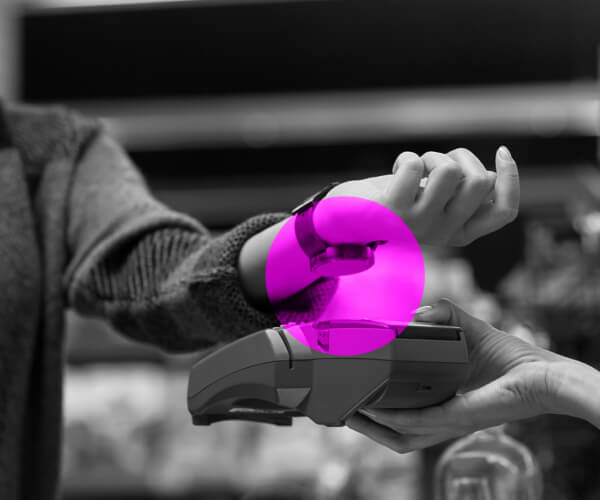What is HFSS?
Earlier this year, Public Health England announced further guidance on previously drafted policy restricting the promotions of products that are High in Fat, Sugar, and Salt (HFSS) by location and price. This new policy (subject to final parliament approval) aims to help improve the population’s diets and combat obesity, focusing on battling rising rates of childhood obesity. Well-known statistics show that over two-thirds of adults are above a healthy weight and over one-fifth of the population of children in England are overweight.
HFSS products are those prepackaged food and drink products that, according to the Department of Health 2004/05 nutrient profiling model, have a profile that is primarily made up of unfavourable nutrients (Fat, Sugar, Salt) and lacking in favourable nutrients such as Fibre, Protein, Fruit & Veg in their composition. Given the nature of prepackaged foods, the scope of categories and products defined as HFSS is vast, ranging from impulse/treat categories such as Soft Drinks, Confectionery, Crisps to more everyday/staples such as Breakfast Cereals/Bakery, Pizzas, and Sweetened Dairy/Desserts.
Enacting the policy is unquestionably good-intentioned: focusing on the health of our children and part of a series of regulations to safeguard their wellbeing. However, the reality is that with or without product reformulations, these HFSS categories will continue to play a role in our diets. Any real improvement in obesity levels relies on our ability to behave rationally and accurately define what ‘in moderation,’ in fact, looks like. This regulation alone is not sufficient to trigger an intentional change to our largely irrational shopper behaviour. What, however, IS about to change is the nature and composition of the traditional ‘impulse’ purchase. The amount of consideration and ‘effort’ shoppers will need to navigate the store and buy (traditionally) unplanned impulse purchases are is the most significant untested change in UK retail for decades.
What Does HFSS Mean for Brands and Retailers?
These HFSS policies are adding to the already complicated backdrop: price inflation of goods, import/export complexities of Brexit, broader supply chain issues causing a global impact, and the perceived additional expense of purchasing healthier food options all make for a perfect storm that will have enormous implications for stakeholders in the industry.
While exceptions will exist (i.e., store size, prepackaged goods only, etc.), manufacturers will need to revisit their plans for products in these HFSS categories as this regulation means that as of October 2022, volume/price promotions and placement promotions (i.e., gondola ends, etc.) will be off-limits to these brands.
What’s Next for Point-of-Sale Materials?
Point-of-sale materials (POSM) at shelf will become one of the few remaining shopper marketing tools to address point-of-purchase decision making. With decades of shopper research experience, we know that shoppers pay little attention to detail and are mainly scanning the shelves, managing to glance at only a limited proportion of the shelf as such effective POSM will need to rely much more on visual impact than on explicit messaging.
Locations such as gondola ends have, for many shoppers, become a signal for good value and a driver of impulse purchases. Without promotional placement options to drive traffic to the main shelf, shopper marketers will need to devise new plans to ensure as many shoppers visit their shelf space as possible. Up to 60% of shoppers typically stick to routine paths, and as many as 65% of people who venture down an aisle turn back before reaching the second half of the aisle. The larger the store footprint, the less of the space is browsed by an average shopper.
If not well executed by brands and retailers, a renewed focus on POSM to help drive traffic and communicate key benefits such as value can drive clutter in the HFSS categories. Effective implementation of visually disruptive POSM materials must consider the broader context in which the POSM is encountered. Designs tried and tested in isolation can deliver negative consequences. Too much clutter is a barrier to selection, and confusion will ultimately lead to a lost sale
What’s Next for these HFSS Categories?
Confusion at the shelf is only one of the challenges of the new regulation. Confusion can easily take hold of the trading relationships between retailers and suppliers while the industry tries to navigate through the implementation of this regulation over the coming year.
The key to success will be in retailers and brands collaborating to succeed together. With retailers ultimately responsible for non-compliance, brands who can help retailers comply and provide evidence-based examples of how a category can still succeed in this new era will strengthen their trading partnership.
Given the disproportionate impact impulse purchases and volume promotions such as BOGOF have traditionally had in driving growth in many of the HFSS categories, confidently achieving volume growth in 2022 and 2023 will require a carefully validated sales and merchandising plan that is based on verified consumer response to the new set of stimuli at shelf. Retailers and brands need to optimize the digital and physical shelf for navigation, findability, and shopability. These factors will become more critical than ever with the new HFSS policies.
Ready, Set, Go!
Brands and retailers need to adhere to these new regulations, but instead of seeing it as a hurdle and challenge, we should see it as a unique opportunity to seize and rethink marketing strategies.
Time is running out. There is so much to do for the industry, and the implementation of HFSS legislation is scheduled for October 2022! Stay tuned as we will be providing more learnings, insights, and action steps you can do to stay ahead of the competition.
Contact us today to understand what your brand’s POSM and packaging can do to succeed in this new and healthier landscape.
The Author
Kai Virtanen is a Vice President of Market Development for Behaviorally (formerly PRS). Kai Virtanen spearheads Behaviorally new business efforts in the UK and, together with his colleagues, across the rest of Europe.
While reasonably new to the Behaviorally business, he has been working with the FMCG industry, uncovering shopper challenges across the globe, for over two decades. His pet peeve as far as shopper marketing is concerned is good intentions failed by poor execution, something that means he does most of his shopping online these days mainly to avoid being caught reorganizing shelves at his local supermarket.

